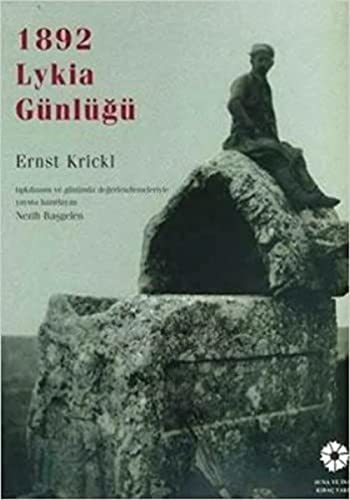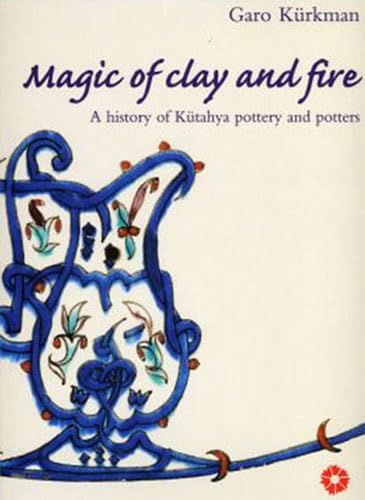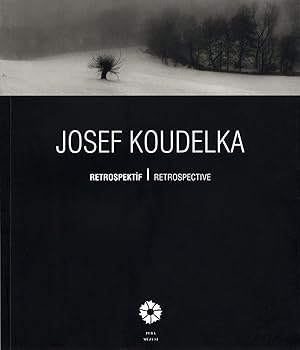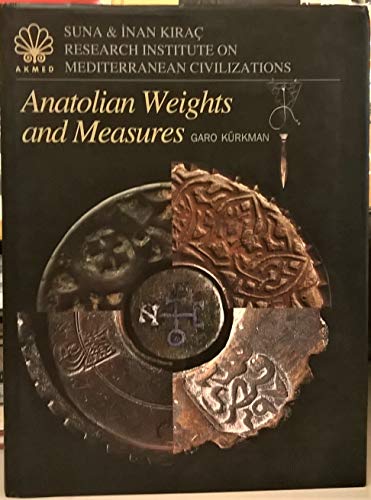suna and inan kiraç foundation istanbul (18 results)
Product Type
- All Product Types
- Books (18)
- Magazines & Periodicals
- Comics
- Sheet Music
- Art, Prints & Posters
- Photographs
- Maps
-
Manuscripts &
Paper Collectibles
Condition
Binding
Collectible Attributes
- First Edition (6)
- Signed
- Dust Jacket (3)
- Seller-Supplied Images (1)
- Not Printed On Demand
Seller Location
Seller Rating
-
Portraits from the Empire. The Ottoman world and the Ottomans from the 18th to 20th Century with selected works of art from the Suna and Inan Kirac Foundation Collection.
Published by Suna and Inan Kiraç Foundation, Istanbul, 2005
ISBN 10: 9759123029ISBN 13: 9789759123024
Book
Soft cover. Condition: New. Paperback. Pbo. 4to. (33 x 24 cm). In English. Color ills. 155 p. Throughout the ages, the Orient has attracted the interest of the West. European intellectual and artists have been mesmerized since the earliest times by this presumably mysterious and relatively closed world. As a natural consequence, during various periods many artists, either by travelling themselves or by travelling in their imaginations, sought to discover the essence of the Orient, and depicted or expressed in their works either the real Orient or their own visions of it. The movement known as Orientalism in European art, which appeared in conjunction with the Romanticist movement of the 19th century, focused on the East, primarily in the lands of the Ottoman Empire. Even long before the rise of Orientalism in European art, many European artists, fascinated by their first glimpses of the mysterious East and by the Turquerie fashion which was the result of the new relations with the Ottoman world. For nearly two hundred years, starting from the 18th century, numbers of painters, some of whom became known as the Bosphorus Painters, worked intensively in the lands of the Empire and depicted the Ottoman world ib its various aspects, consequently engraving those images in mankind's visual memory. The exhibition Portraits from the Empire sheds light on a special part of this opulent world. Almost sixty paintings selected from the Suna and Inan Kiraç and Sevgi and Erdogan Gönül collections bring us face to face with the peoples of the Ottoman world, their portraits and portrayals, sometimes very familiar and sometimes remote, even nearly foreign, in their physiognomies. These paintings, most of them created before the eye of the camera replaced the human eye, in the times when observing, studying, interpreting and depicting the world was the priority of painters, present the lost faces of an era long past with amazing reality and vividness.
-
Cities of the three books: Jerusalem and the Holy Land in 19th century photographs.= Üç kitapli kentler: 19. yüzyil fotograflarinda Kudüs ve kutsal topraklar.
Published by Istanbul Arastirmalari Enstitüsü / Suna & Inan Kiraç Foundation, Pera Museum, Istanbul, 2008
ISBN 10: 9759123533ISBN 13: 9789759123536
Book First Edition
Soft cover. Condition: New. 1st Edition. Paperback. Pbo. Small 4to. In English and Turkish. 165 p., b/w and color ills. Cities of the three books: Jerusalem and the Holy Land in 19th century photographs.= Üç kitapli kentler: 19. yüzyil fotograflarinda Kudüs ve kutsal topraklar. The Album of Grand Vizier Kâmil Pasha and Local Photographers: The photograph album presented to Grand Vizier Kâmil Pasha encompasses 111 images of the Holy Land. A portion of these photographs was taken by Garabed Krikorian of the Jerusalem Armenian community. The person who introduced Krikorian to the art of photography was none other than Yessayi Garabedian, the first local photographer of Jerusalem. He established his own photographic studio in 1859 within the Jerusalem Armenian Monastery. Mendel John Diness, Peter Bergheim, Davud Sabunci, Leon Katz, Khalil Raad and Yeshayahu Raffalovich are recognized as outstanding masters of local photography in late-19th century. Jerusalem: The City of Faith and Passion: Prophets and kings constructed hand in hand the mythology of Jerusalem. The thrones of the heavens and earth were set in this city. From David to Solomon, and from Jesus Christ to Muhammad, it was the singular pole in a geography of faith. In the Middle Ages, it replaced Rome, which regarded itself as the navel of the earth. Jerusalem was the dream of those who embraced the Cross and the indispensable, holy land of Umayyad, Abbasid, Ayyubid, Fatimid caliphs, as well as Mamluk and Seljukid sultans. The city found peace under Ottoman rule from 1516 until 1917. Yet, before and after that time, the tears of humanity did not subside. First Photographers in the Holy Land: In 1833, British explorer Frederick Catherwood used the camera lucida in the Holy Land and produced the very first images of the Noble Sanctuary (Haram al-Sharif). Catherwood, who unveiled the Sacred, was followed by Scottish minister Alexander Keith. Keith's goal was to corroborate the text of the Holy Bible with images. This concept set the groundwork for British picturesque photography, which was particular to the Orient. In 1844, Joseph-Philibert Girault de Prangey experimented with a different style and focused on Islamic architecture in the Holy Land. Thus came along the first products of French documentary photography vis-à-vis the British picturesque. The photographers who convey to us today the history of the Holy Land have, to a large extent, emerged out of this school.
-
Constructing a dream: Socialist realism in Albanian art.= Bir rüyanin insasi: Arnavut sanatinda toplumcu gerçekçilik. [Exhibition catalogue].
Published by Pera Museum Suna and Inan Kiraç Foundation, Istanbul, 2020
ISBN 10: 6054642901ISBN 13: 9786054642908
Book
Soft cover. Condition: New. Paperback. 4to. (29 x 24 cm). Bilingual in English and Turkish. 167 p., color ills. The exhibition focuses on Albanian social realism through painting, poster and drawings, and it offers a selection of artworks produced under the dictatorship that aimed to spread socialism's main principles among the proletarian. The exhibition investigates the impact of the communist ideology on Albanian visual arts during the second half of the 20th century. The selected artworks reflect the ideology that played an important role in the works' dogmatic content. The exhibition offers an opportunity to become familiar with the culture and identity of Albanian people who had been isolated from the rest of the world for a long time, and centers around the daily life, working class, portraits of leadership, representations of the regime and a hopeful approach to upcoming generations. The exhibition catalogue features an essay titled Socialist Realism in Albanian Style by the art historian Ermir Hoxha, presenting an art historical analysis of the period, as well as a comprehensive text about the exhibition by the curator Artan Shabani, titled Constructing a Dream: Socialist Realism in Albanian Art. Texts are accompanied by a chronology entitled 20th Century Albanian Art and Politics, providing historical information. Contents: Foreword by Suna, Inan ve Ipek Kiraç.; Socialist Realism in Albanian Style, Ermir Hoxha.; Constructing a Dream: Socialist Realism in Albanian Art, Artan Shabani.; 20th Century Albanian Art and Politics.; Catalog.
-
Kütahya tiles and ceramics. Suna and Inan Kiraç Foundation Collection. Catalogue.
Published by Suna and Inan Kiraç Foundation, Istanbul, 2006
ISBN 10: 9759123134ISBN 13: 9789759123130
Book
Soft cover. Condition: New. Paperback. 4to. (29 x 25 cm). In English. 226 p., color ills. A substantial portion of the Suna and Inan Kirac Foundation Collection of Kutahya tiles and ceramics was published in detail in 1997 in the book, Delights of Kutahya. Since the publication of this work, the collection has been considerably enriched both quantitatively and qualitatively with the acquisition of 93 pieces. This new publication is intended to re-evaluate and introduce in detail the entire collection with the inclusion of its new additions.
-
Singapur unseen.= Görünenin ardindaki Singapur. [Exhibition catalogue]. Curated by Tay-Kay Chin. Prep. Begüm Akkoyunlu Ersöz, Yasemin Ülgen.
Published by Pera Museum Suna and Inan Kiraç Foundation, Istanbul, 2018
ISBN 10: 6054642774ISBN 13: 9786054642779
Book
Soft cover. Condition: New. Paperback. 4to. (28 x 23 cm). In English and Turkish. 235 p., b/w photos. Singapur unseen.= Görünenin ardindaki Singapur. [Exhibition catalogue]. Curated by Tay-Kay Chin. Prep. Begüm Akkoyunlu Ersöz, Yasemin Ülgen. Singapore Unseen exhibition brings together ?ordinary? scenes from the daily life in Singapore through unique viewpoints of photographers living in the country. Curated by photographer Kay Chin TAY, the exhibition is the outcome of a two-year collaboration by PLATFORM- a photography collective to promote photojournalism and documentary work in Singapore. This exhibition is an in-depth study into the nation's rather unknown face solely visible from a local perspective. In the works selected, the photographers dealt with everyday places like public housing estates, factories, mass rapid transit stations, hawker centres (local food centres) and wet markets. The images uncover delight in the otherwise sterile and banal environment. It is also rather revealing through the eyes of the younger generation how the previous generation have persevered in what seemed like their destined roles as anchors for a more stable society.
-
The anatomy of a tradition: 150 years of Robert College.= Bir gelenegin anatomisi: Robert Kolej'in 150 yili. [Exhibition catalogue].
Published by Suna and Inan Kiraç Foundation / Pera Museum, Istanbul, 2013
ISBN 10: 6054642138ISBN 13: 9786054642137
Book First Edition
Soft cover. Condition: New. 1st Edition. Paperback. Color and b/w ills. 670 p. In English and Turkish. The anatomy of a tradition: 150 years of Robert College.= Bir gelenegin anatomisi: Robert Kolej'in 150 yili. [Exhibition catalogue]. A very heavy volume. Istanbul Research Institute in collaboration with Robert College presented the exhibition The Anatomy of a Tradition: 150 Years of Robert College 1863 - 2013 at the Istanbul Research Institute on the occasion of 150th anniversary of Robert College, one of the long-established and meritocratic educational institutions of Istanbul. Robert College was founded in Istanbul in 1863 by Cyrus Hamlin and Christopher R. Robert, two men who believed in the universal value of education. It was the first American school to be established in the Ottoman lands, and outside the USA. Surviving revolutions, wars, earthquakes, fires, and epidemics, the College never closed down a single day throughout its 150-year history. Robert College has educated seven prime ministers (four of them Bulgarian), countless statesmen, writers, artists, musicians, actors, athletes, businessmen, engineers, doctors, lawyers, and educators.It has been the standard against which other schools measure themselves, even when Robert College itself had the challenge of living up to its own standards, due to lack of funding, inadequate buildings etc. from time to time throughout its history. Curated by Cem Akas, the exhibition shed light on the 150 years of the College, as well as the educational, cultural, social and intellectual life in Istanbul through selected photographs and objects from Robert College Archives, Columbia University Rare Book & Manuscript Library and private collections.
-
A window to the west: The 150 years of the Galatasaray Lycee, 1868-2018.= Batiya açilan pencere: Galatasaray Lisesi'nin 150 yili, 1868-2018. Coord. by Zeynep Ögel, Gülru Tanman.
Published by Suna and Inan Kiraç Foundation Istanbul Research Institute Publications, Istanbul, 2018
ISBN 10: 6054642812ISBN 13: 9786054642816
Book First Edition
Soft cover. Condition: New. 1st Edition. Paperback. Large 8vo. (22 x 22 cm). In English and Turkish. 467, [1] p., color and b/w ills. A window to the west: The 150 years of the Galatasaray Lycee, 1868-2018.= Batiya açilan pencere: Galatasaray Lisesi'nin 150 yili, 1868-2018. Coord. by Zeynep Ögel, Gülru Tanman. Includes 11 articles on the history of the school which gave an education in French. The Galata Sarayi, registered in Istanbul's records from the end of the 15th century onwards as a palace school; is the city¿s only non-religious institution that has survived unchanged until the present day. Beginning with its founding myth based on the meeting of Bayezid II and Gul Baba, the building complex bore the very same name, and in time lent it to the neighbourhood evolving around it as well. The Galata Sarayi complex, which is used to train qualified personnel to the Ottoman Palace and Army throughout its history, became a pioneering military school; offering elementary-grade, and medical education. It hosted innovative developments such as a French curriculum and Western standards in education after the mid-19th century. The Mekteb-i Sultani (Lycee Imperial Ottoman da Galata Serai), took shape as a professional European middle-school; through the close relations between Abdulaziz and the French Emperor Napoleon III, in a series of efforts formulated by Ali Pasha and Fuad Pasha, two influential Ottoman statesmen of the time. One of the first secular institutions, offering equal rights of education to the diverse peoples of the Ottoman Empire, Galatasaray saw considerable interest after opening and formed a new tradition of education after its first class graduated in 1871. In the last 150 years; as the Mekteb-i Sultani in the final Ottoman years and as the Galatasaray High School from 1923 onwards despite varying successes - the school became a symbolic institution and an elite identity for its students and alumni alike. Designed to share the inspiring memory of this public institution; the exhibit thus presents glimpses from the school¿s efforts, since 1868, to train skilled, qualified individuals. Edited by curator Izzeddin Calislar the exhibition catalogue consists articles that give a unique insight to Galatasaray High School by Emel Engin, Fethi Isfendiyaroglu, Seza Sinanlar Uslu, Gulsun Guvenli Vahdettin Engin, Koksal Bayraktar, Yildizhan Yayla, Tarkan Okcuoglu, Melih Sabanoglu and Izzeddin Calislar.
-
Corpus Ponderum Antiquorum et Islamicorum Turkey 3 - Suna and Inan Kirac Foundation Collection at the Pera Museum. Part 1. Greek and Roman weights.
Published by Istanbul: Suna and Inan Kirac Foundation, 2013., 2013
ISBN 10: 6054642154ISBN 13: 9786054642151
Seller: BOSPHORUS BOOKS, Istanbul, Turkey
Book
Hardcover. Condition: New. TEKIN, OGUZ Corpus Ponderum Antiquorum et Islamicorum Turkey 3 - Suna and Inan Kirac Foundation Collection at the Pera Museum. Part 1. Greek and Roman weights. Istanbul: Suna and Inan Kirac Foundation, 2013. 4to., x, [1], 177 p., ills., 1 color plate. Original cloth binding. New ISBN: 9786054642151 CATALOG: Archaeology KEYWORDS: Archaeology Greek Roman Empire Antiquity Anatolian civilizations Collection There are over five thousand weights from the Suna and Inan Kirac Foundation Collection at the Pera Museum, ranging in date from the Ancient Near Eastern Civilizations, Greek, Roman, Byzantine, Seljuk, and Ottoman periods. This large collection will be published in a number of separate volumes as part of the series of Corpus Ponderum Antiquorum et Islamicorum. The present catalogue is the first volume, covering 635 Greek and Roman weights. The Roman truncated spheres, however, were excluded from the present catalogue and will be included in the second volume, which will cover the Late Roman and Byzantine weights. The majority of the weights in the Suna and Inan Kirac Foundation Collection were acquired over a period of thirty years by Inan Kirac through various local and international auctions and collectors. The catalogue is arranged in two sections: the first covers weights in the Greek standard, and the second, weights in the Roman standard. The Greek standard weights (407) are more numerous than the Roman standard weights (228). Some of the Greek standard weights belong to the cities of western Asia Minor. For example, while the cities of Lysimachea, Abydus, Alexandria Troas, Cyme, and Smyrna are represented by one or two weights, the weights of Cyzicus, Myrina, Ephesus, and Miletus are larger in number. But one may suppose that most of the weights without a civic symbol or ethnikon were also produced or used in the cities of western Asia Minor. In addition, weights that bear denominational marks on them (i.e. mna, hemimnaion, tritemorion, tetarton, hektemorion, ogdoon, tristateron etc.) are common in the catalogue. Weights of the Roman standard are made up of the litra and its multiples/subunits (i.e. litra, dilitron, semis, uncia, half-uncia, siliqua, scripulum etc.). Some weights of the Roman standard bear an inscription in addition to its unit mark so they need detailed further study epigrapically, which has been intentionally omitted from the catalogue. Oguz Tekin CONTENTS Preface Abbreviations Plates (numbers refer to plates) Notes on the Catalogue Greek System Weights with ethnic or civic badge Weights without ethnic Weights with unit mark only Weights with monogram-stamps Miscellaneous bronze weights Plain lead weights Roman System Litra and its multiples / subunits Weights made from coins Glossary of Units Concordance.
-
Lycian journal 1892. Edited by Nezih Basgelen, facsimile and contemporary commentary. Essays by Bulent Iplikcioglu, Hansgerd Hellenkemper.
Published by Istanbul: Suna and Inan Kirac Foundation / Archaeology and Art Publications, 2005., Istanbul:, 2005
ISBN 10: 9756561882ISBN 13: 9789756561881
Seller: BOSPHORUS BOOKS, Istanbul, Turkey
Book
Hardcover. Condition: Very Good. KRICKL, ERNST Lycian journal 1892. Edited by Nezih Basgelen, facsimile and contemporary commentary. Essays by Bulent Iplikcioglu, Hansgerd Hellenkemper. Istanbul: Suna and Inan Kirac Foundation / Archaeology and Art Publications, 2005. 4to., 319 p., color and b/w ills. Original binding. Dust wrapper. Very good Oversize and very heavy volume. Please contact for postage cost. ISBN: 9789756561881 CATALOG: Archaeology KEYWORDS: Archaeology Lykia Anatolian civilizations Antalya - Attalia - Adalia Travel memories An Austrian military engineer, Captain Ernst Krickl was a member of an Austrian archaeological expedition to Lycia in southwest Anatolia in 1892. Krickl made important contributions to this stage of Lycian research, drawing sketches of the monuments they encountered and plans of the ancient sites they visited, and taking photographs. 1892 Lycian Journal is Ernst Krickl's personal account of the expedition, illustrated with photographs. These three albums are here published in facsimile and English translation together with contemporary commentary on the expedition as described by Krickl. Reading Krickl's journal we accompany this young military engineer on a journey with some of the most eminent scholars of his time through a world that was completely strange to him and in many respects is strange to us in Turkey today, due to the radical changes that have taken place over the intervening century.
More buying choices from other sellers on AbeBooks
New offers from US$ 77.16
Used offers from US$ 66.14
Also find Hardcover
-
A road story: 180 years of photography.= Bir yol öyküsü: Fotografin ardinda 180 yil. [Exhibition catalogue].
Published by Pera Museum Suna and Inan Kiraç Foundation, Istanbul, 2019
ISBN 10: 6054642898ISBN 13: 9786054642892
Book
Soft cover. Condition: New. Paperback. 4to. (29 x 24 cm). In English and Turkish. 281, [2] p., color and b/w photos and ills. A road story: 180 years of photography.= Bir yol öyküsü: Fotografin ardinda 180 yil. [Exhibition catalogue]. At the 180th anniversary of invention of photography and the first photography trip that took place in 1839, A Road Story: 180 Years of Photography exhibition brings together interpretations and perspectives of photographers who explore the same route with today?s techniques. French painter Émile Jean Horace Vernet, painter Charles Marie Bouton who is among the inventors of Diorama technique, and daguerreotypist Frédéric Auguste Antoine Goupil-Fesquet depart from the Port of Marseille in October 1839 to take photographs and return to Marseille six months later, in April 1840 passing from Livorno, Malta, Syros, Paros, Naxos, Santorini, Alexandria, Cairo, Luxor, Suez, Mount Sinai, Gaza, Bethlehem, Jerusalem, Nablus, Sayda, Deir Al Qamar, Damascus, Tripoli, Baalbek, Beirut, Larnaca, Rhodes, Kos, Izmir, Dardanelles, Istanbul and Rome. Frédéric Auguste Antoine Goupil-Fesquet conveyed his impressions about this journey in his book, Voyage d?Horace Vernet en Orient that would be published in 1843. At the 180th anniversary of this first known group photography trip, the exhibition curated by Engin Özendes features the artists Co?kun Aral, Laleper Aytek, Ali Boroval?, Murat Germen, Sinan Koçaslan, Yusuf Sevinçli, Alp Sime, Lale Tara, Serkan Taycan and Cem Turgay. The photographs they took during their trips to the stops of the earlier journey reflect a contemporary take on these cities with rich histories.
-
1892 Lykia gunlugu. Edited by Nezih Basgelen, facsimile and contemporary commentary. Essays by Bulent Iplikcioglu, Hansgerd Hellenkemper.
Published by Istanbul: Suna and Inan Kirac Foundation / Archaeology ve Sanat Yayinlari, 2005., 2005
ISBN 10: 9756561874ISBN 13: 9789756561874
Seller: BOSPHORUS BOOKS, Istanbul, Turkey
Book
Hardcover. Condition: New. KRICKL, ERNST 1892 Lykia gunlugu. Edited by Nezih Basgelen, facsimile and contemporary commentary. Essays by Bulent Iplikcioglu, Hansgerd Hellenkemper. Istanbul: Suna and Inan Kirac Foundation / Archaeology ve Sanat Yayinlari, 2005. 4to., 318 p., color and b/w ills. In Turkish. Original binding. Dust wrapper. New Oversize and very heavy volume. Please contact for postage cost. ISBN: 9789756561874 CATALOG: Archaeology KEYWORDS: Archaeology Lykia Anatolian civilizations Antalya - Attalia - Adalia Travel memories 19. Yuzyil sonlarinda Guneybati Anadolu'nun antik Lykia bolgesinde ilk incelemelerini yapan Avusturyali bilim adamlarinin 1892 yilinda duzenledigi ucuncu geziye, Avusturyali istihkam yuzbasisi Ernst Krickl da katilmis ve yaptigi cizimler, cikardigi haritalar ve cektigi fotograflarla, Lykia arastirmalarinin bu asamasina onemli katkilarda bulunmustu. 1892 Lykia Gunlugu, Ernst Krickl'in bu gezi sirasinda cektigi fotograflarla tuttugu notlardan olusan cok degerli uc albumu, yuz yili asan bir surenin ardindan, tipkibasimlari ve gunumuz degerlendirmeleriyle yeniden gun isigina cikiyor. 1892 Lykia Gunlugu'nde 19. yuzyil sonlarinin genc bir istihkam subayi, kendisine butunuyle yabanci ama bugun bizim icin bile bircok seyiyle degismis bir dunyayi donemin onemli bilim adamlarinin esliginde gezerken, bize de adim adim gezdiriyor, anlatiyor, tanitiyor.
-
Corpus Ponderum Antiquorum et Islamicorum Turkey 3 - Suna and Inan Kirac Foundation Collection at the Pera Museum. Part 2. Late Roman and Byzantine weights.
Published by Istanbul: Suna and Inan Kirac Foundation, 2015., Istanbul:, 2015
ISBN 10: 6054642464ISBN 13: 9786054642465
Seller: BOSPHORUS BOOKS, Istanbul, Turkey
Book
Hardcover. Condition: New. TEKIN, OGUZ Corpus Ponderum Antiquorum et Islamicorum Turkey 3 - Suna and Inan Kirac Foundation Collection at the Pera Museum. Part 2. Late Roman and Byzantine weights. Istanbul: Suna and Inan Kirac Foundation, 2015. 4to., 226 p., color ills. Original binding. New ISBN: 9786054642465 CATALOG: Archaeology KEYWORDS: Archaeology Byzantium Roman Empire Anatolian civilizations Collection There are over five thousand weights from the Suna and Inan Kirac Foundation Collection at the Pera Museum, ranging in date from the Ancient Near Eastern Civilizations, Greek, Roman, Byzantine, Seljuk, and Ottoman periods. This large collection will be published in a number of separate volumes as part of the series of Corpus Ponderum Antiquorum et Islamicorum. The first volume covers 635 Greek and Roman weights. The Roman truncated spheres are included in the second volume, which covers the Late Roman and Byzantine weights. The majority of the weights in the Suna and Inan Kirac Foundation Collection were acquired over a period of thirty years by Inan Kirac through various local and international auctions and collectors. The present second volume, completed in a three-year-long study, covers the Late Roman and Byzantine weights in the same collection. The catalogue covers 742 weights, 38 of which are of glass. The majority of the weights were acquired between 2005 and 2008. In the catalogue 201 weights are grouped under the title of ?Commercial Weights? while 456 weights are grouped under the title of ?Coin Weights?. Furthermore, the catalogue covers circular weights with concentric circles and bowl-shaped weights both of which date to the Middle Byzantine Period.
-
Magic of clay and fire : a history of Kutahya pottery and potters
Published by Istanbul : Suna and Inan Kirac Foundation Publication, 2017
ISBN 10: 9759123142ISBN 13: 9789759123147
Seller: Arthur Probsthain, London, United Kingdom
Book First Edition
Hardcover. Condition: Fine. Dust Jacket Condition: Fine. 1st Edition. 405 pages : illustrations ; 33 cm. Some areas of art history have been overlooked in comparison to others, attracted less attention, and for this reason been the subject of less research and evaluation. Such situations are observed in particular where one branch or period of art in a country is so prominent as to overshadow its neighbours and counterparts. These neglected areas often deserve far more interest than circumstances grant them. Moreover, the bright light cast by their more famous cousins makes it harder, or even sometimes impossible, to do them justice and gain a true understanding of their qualities. A striking example of this phenomenon in Ottoman art is Kutahya ceramics, which have remained relatively unnoticed with the spotlight of attention focused on Iznik. When speaking of Ottoman ceramics it is first of all those of Iznik that spring to mind today, and this was no less true in the past. Kutahya pottery, like that of Canakkale, has been left to straggle far behind. Yet even a little examination reveals that although in comparison with these splendid 'court art' of Iznik, the pottery of Kutahya is regarded as provincial in character, and that of Canakkale as 'folk art', both these traditions are marked by lively originality and creativity. This book has been designed to throw new light on one of these overshadowed areas, the richly endowed world of Kutahya ceramics. In a region where pottery has been produced without interruption through the Phrygian, Greek, Roman, Byzantine, Ottoman and modern periods, Kutahya's long history of pottery production - its development, materials, workshops and craftsmen - has now been re-examined in new depth. Garo Kurkman has combed museums and archives all over the world, bringing to light a myriad documents and photographs that have never been published before, and his fascinating study based on all this new information takes us on a thrilling journey through the magical world of clay, fire and glaze.
-
Magic of clay and fire. A history of Kütahya pottery and potters.
Published by Suna and Inan Kiraç Foundation / Pera Museum, Istanbul, 2006
ISBN 10: 9759123142ISBN 13: 9789759123147
Book
Dust jacket. Condition: New. Dust Jacket Condition: New. Original bdg. Dust wrapper. 4to. (33 x 25 cm). In English. 405 p. Color ills. Some areas of art history have been overlooked in comparison to others, attracted less attention, and for this reason been the subject of less research and evaluation. Such situations are observed in particular where one branch or period of art in a country is so prominent as to overshadow its neighbours and counterparts. These neglected areas often deserve far more interest than circumstances grant them. Moreover, the bright light cast by their more famous cousins makes it harder, or even sometimes impossible, to do them justice and gain a true understanding of their qualities. A striking example of this phenomenon in Ottoman art is Kutahya ceramics, which have remained relatively unnoticed with the spotlight of attention focused on Iznik. When speaking of Ottoman ceramics it is first of all those of Iznik that spring to mind today, and this was no less true in the past. Kutahya pottery, like that of Canakkale, has been left to straggle far behind. Yet even a little examination reveals that although in comparison with these splendid 'court art' of Iznik, the pottery of Kutahya is regarded as provincial in character, and that of Canakkale as 'folk art', both these traditions are marked by lively originality and creativity. This book has been designed to throw new light on one of these overshadowed areas, the richly endowed world of Kutahya ceramics. In a region where pottery has been produced without interruption through the Phrygian, Greek, Roman, Byzantine, Ottoman and modern periods, Kutahya's long history of pottery production - its development, materials, workshops and craftsmen - has now been re-examined in new depth. Garo Kurkman has combed museums and archives all over the world, bringing to light a myriad documents and photographs that have never been published before, and his fascinating study based on all this new information takes us on a thrilling journey through the magical world of clay, fire and glaze. Some aspects of art history are inevitably overshadowed, and attracting less attention are inadequately researched and evaluated. This happens particularly when one branch or period of a country's art rises to the fore and casts a dazzling light in which other close and similar forms pale into indignificance. arts which are so outshone do not receive the appreciation they really deserve, the brigjht of their illustrious fellow over shadwowed arts possess unexpected riches, uniqe flavours and unforeseen depths thath await discovery by the alert arthistorian, the sharp eyed collector, and the art lover who enjoys following rarely trodden paths.
More buying choices from other sellers on AbeBooks
New offers from US$ 120.00
Used offers from US$ 102.90
Also find Hardcover First Edition
-
Magic of clay and fire: A history of Kutahya pottery and potters.
Published by Istanbul: Suna and Inan Kirac Foundation, 2006., 2006
ISBN 10: 9759123142ISBN 13: 9789759123147
Seller: BOSPHORUS BOOKS, Istanbul, Turkey
Book First Edition
Hardcover. Condition: New. Dust Jacket Condition: New. 1st Edition. KURKMAN, GARO Magic of clay and fire: A history of Kutahya pottery and potters. Istanbul: Suna and Inan Kirac Foundation, 2006. 4to., 405 p., color and b/w ills. In English. Original binding. Dust wrapper. New Oversize and very heavy volume. Please contact for postage cost. ISBN: 9789759123147 CATALOG: Turkish & Islamic arts KEYWORDS: Kütahya tile Tile Ceramics History of art Turkish handicrafts Ottoman culture Some areas of art history have been overlooked in comparison to others, attracted less attention, and for this reason been the subject of less research and evaluation. Such situations are observed in particular where one branch or period of art in a country is so prominent as to overshadow its neighbours and counterparts. These neglected areas often deserve far more interest than circumstances grant them. Moreover, the bright light cast by their more famous cousins makes it harder, or even sometimes impossible, to do them justice and gain a true understanding of their qualities. A striking example of this phenomenon in Ottoman art is Kutahya ceramics, which have remained relatively unnoticed with the spotlight of attention focused on Iznik. When speaking of Ottoman ceramics it is first of all those of Iznik that spring to mind today, and this was no less true in the past. Kutahya pottery, like that of Canakkale, has been left to straggle far behind. Yet even a little examination reveals that although in comparison with these splendid 'court art' of Iznik, the pottery of Kutahya is regarded as provincial in character, and that of Canakkale as 'folk art', both these traditions are marked by lively originality and creativity. This book has been designed to throw new light on one of these overshadowed areas, the richly endowed world of Kutahya ceramics. In a region where pottery has been produced without interruption through the Phrygian, Greek, Roman, Byzantine, Ottoman and modern periods, Kutahya's long history of pottery production - its development, materials, workshops and craftsmen - has now been re-examined in new depth. Garo Kurkman has combed museums and archives all over the world, bringing to light a myriad documents and photographs that have never been published before, and his fascinating study based on all this new information takes us on a thrilling journey through the magical world of clay, fire and glaze.
-
Josef Koudelka: Retrospektif/Retrospective (Suna and Inan Kiraç Foundation, Pera Museum)
Published by Suna and Inan Kiraç Foundation, Pera Museum, Istanbul, Turkey, 2008
ISBN 10: 9759123290ISBN 13: 9789759123291
Seller: Vincent Borrelli, Bookseller, Albuquerque, NM, U.S.A.
Book First Edition
Soft cover. Condition: New. 1st Edition. First edition, first printing. Soft cover. Photographically illustrated matt-laminated French-fold wrappers; no dust jacket as issued. Photographs and text (in Turkish and English) by Josef Koudelka. Essay (in Turkish and English) by Romeo Martinez. Interviews with Koudelka (in Turkish and English) by Hervé Guibert, Robert Delpire and Karel Hvízdala. Designed by Tut Ajans. Includes a biography (in Turkish and English) compiled by Stuart Alexander. 140 pp., with 70 quadtone plates beautifully printed on heavy coated stock in Turkey by Mas Matbaacilik A.S., Istanbul. 11 x 9-1/2 inches. This edition was limited to 1000 copies. Out of print. Scarce. Published on the occasion of a major retrospective exhibition at the Suna and Ínan Kiraç Foundation Pera Museum, Istanbul, organized with the collaboration of Magnum Photos. New. From the publisher: "In this exhibition Josef Koudelka reveals a side of himself we rarely see because it is usually covered up by the striking aesthetic quality of his photographs. With time this apparent globetrotter has shown himself to be an engaged photographer whose now world-renowned, fundamental subject matter is, internally, always related to his native land, whether as a conscious message or out of a subconscious need. In this work the local dimension meets the universal. The retrospective takes stock of all the stages of Koudelka's work and its main thematic areas. The exhibition opens with a set of rare original prints from the late 1950s and early 1960s. They are followed by two parallel topics from the 1960s - Koudelka's key series Gypsies, and, on the other hand, his work for respected Czech theatres. In Prague, Koudelka met important figures in the arts, such as the theatre directors Otomar Krejca and Jan Grossman and the writer-dramatists Josef Topol and Václav Havel, who helped to maintain the continuity of Czech culture when it was under heavy ideological pressure from the totalitarian state. An important part of Koudelka's work is the Invasion series made in Prague, in August 1968. Shortly afterwards, in 1970, he emigrated, and the resultant feelings of being uprooted found expression in photographs which, as a series, are called Exiles. The two series, Invasion and Exiles, may be understood as a whole that is related to the Czech situation, its causes and effects. With increasing frequency and gravity his work came to include both politics (as concern for public affairs) and his own personal themes of searching and finding, all within the problematic reality of the contemporary world. Shortly after leaving his homeland he began to work with Magnum Photos, and, in 1974, became the only Czech full member of this international agency. After returning to Czechoslovakia for the first time since his departure, Koudelka photographed the devastation of the natural environment in the Ore Mountains of Bohemia, from 1990 to 1994. The photographs exhibited and published as The Black Triangle, tie in to the set made with a panoramic camera in the northern France, an area that has also been greatly affected by human intervention. These photographs became part of Koudelka's large project called Chaos, which the current retrospective concludes with. In the devastated landscape of today, the photographer has found 'tragic untamed beauty', the search for which may be understood as Koudelka's lifelong topic.".
-
Anatolian Weights and Measures.
Published by Istanbul: Suna and Inan Kiraç Foundation,, 2003
ISBN 10: 9757078174ISBN 13: 9789757078173
Seller: Thomas Heneage Art Books, London, United Kingdom
Book
423 pages with over 500 colour illustrations. Hardback 32.3 x 24cms. ISBN: 9757078174. Text in English.


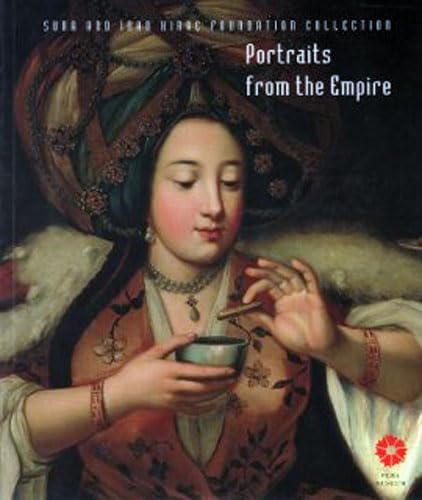
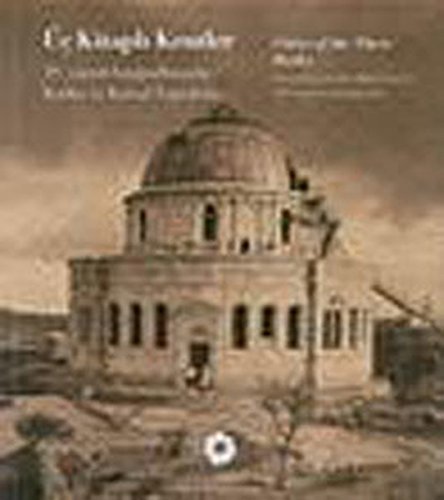
![Stock image for Constructing a dream: Socialist realism in Albanian art.= Bir rüyanin insasi: Arnavut sanatinda toplumcu gerçekçilik. [Exhibition catalogue]. for sale by Khalkedon Rare Books, IOBA](https://pictures.abebooks.com/isbn/9786054642908-us-300.jpg)

![Stock image for Singapur unseen.= Görünenin ardindaki Singapur. [Exhibition catalogue]. Curated by Tay-Kay Chin. Prep. Begüm Akkoyunlu Ersöz, Yasemin Ülgen. for sale by Khalkedon Rare Books, IOBA](https://pictures.abebooks.com/isbn/9786054642779-us-300.jpg)
![Stock image for The anatomy of a tradition: 150 years of Robert College.= Bir gelenegin anatomisi: Robert Kolej'in 150 yili. [Exhibition catalogue]. for sale by Khalkedon Rare Books, IOBA](https://pictures.abebooks.com/isbn/9786054642137-us-300.jpg)

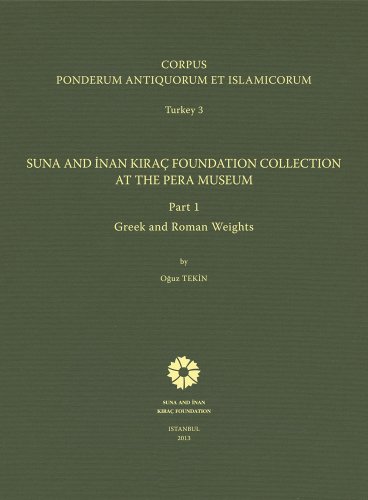

![Stock image for A road story: 180 years of photography.= Bir yol öyküsü: Fotografin ardinda 180 yil. [Exhibition catalogue]. for sale by Khalkedon Rare Books, IOBA](https://pictures.abebooks.com/isbn/9786054642892-us-300.jpg)
